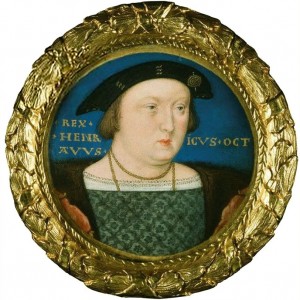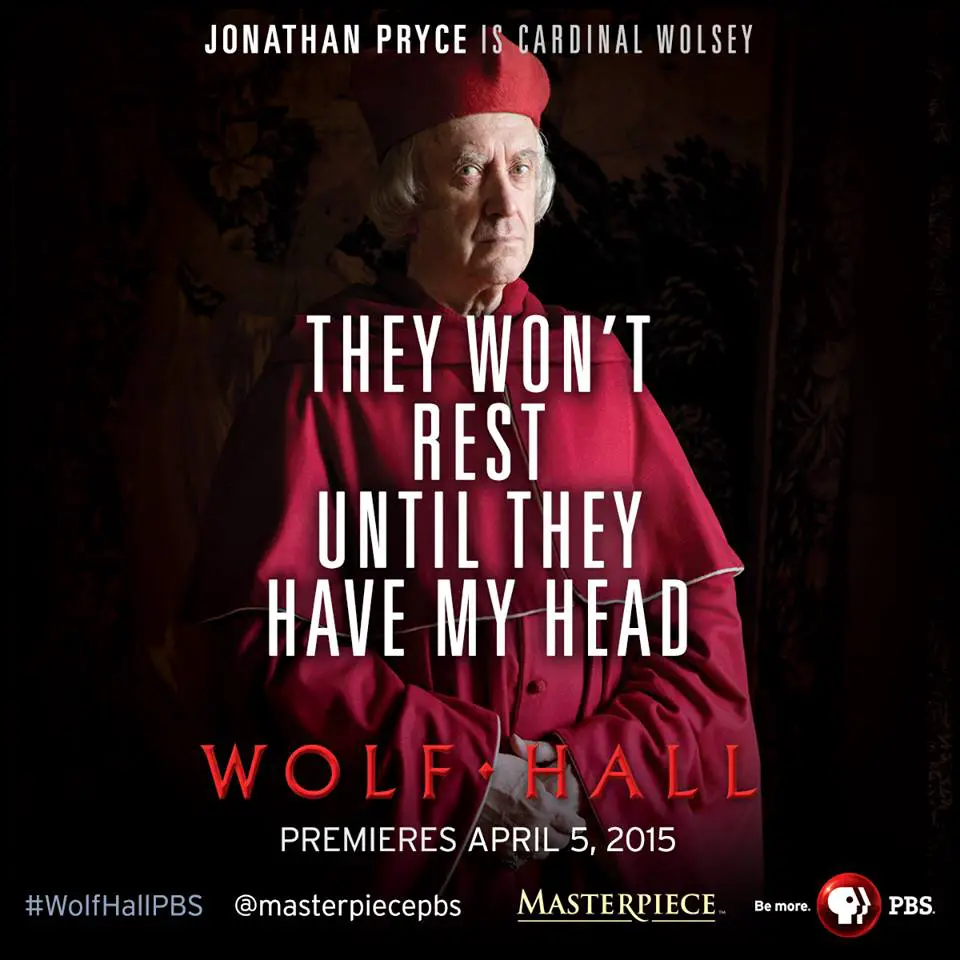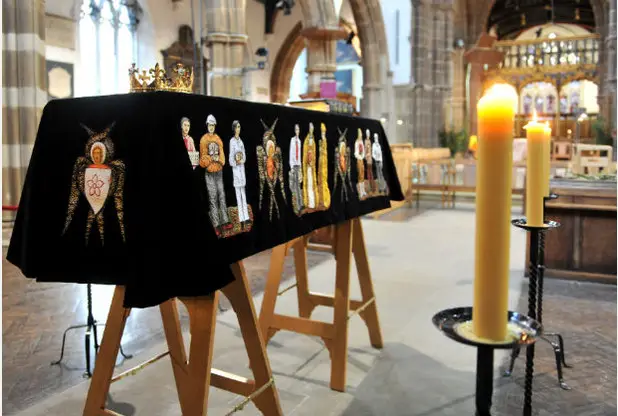
Henry VIII by Horenbout
Lucas Horenbout, or Hornebolte as he was sometimes referred to, was a Flemish artist who specialised in miniature portraits. Born in Ghent in 1490/95 (his exact birthdate is unknown), Horenbout was the son of famous painter and miniature artist Gerard Horenbout. Along with his sister Susannah, Lucas learnt his skill as a painter of miniature portraits from his father. Miniatures are beautifully painted portraits that are extremely small in size, some being only 4cm/1.5inch in diameter.
In 1515, Gerard Horenbout was appointed as painter and valet de chambre to the Archduchess Margaret of Austria. Whether Lucas joined his father or remained in Ghent is unknown. Thomas Boleyn, courtier and ambassador to King Henry VIII, was on friendly terms with the Archduchess and well known to her, having sent his daughter Anne Boleyn there for a period of time to finish her education. It has been suggested that it was through his many trips to the Archduchess's court that Thomas Boleyn became aware of Gerard Horenbout and may have suggested that he come to England.
Whatever the reason for the move, the Horenbout family relocated to England in the mid 1520s. The first mention of Lucas Horenbout in relation to King Henry VIII is in September 1525 in royal accounts where he is referred to as a ‘pictor maker’. Whether this relates to miniatures or portraits is unknown. However, in 1531 Horenbout was appointed as the King’s painter and this title was officially conferred upon him for life on 22 June 1534. He was paid the sum of £33 6s per year. Also on this day, Horenbout became a denizen, an official citizen of London of foreign origins. This was a great reward for the Flemish artist and high recognition for his spectacular work.
It is widely believed that it was Horenbout and his family that brought the art of miniatures to England. Twenty-three miniatures have been attributed to Lucas Horenbout and of those seven are of King Henry VIII, dating from around 1525 - 1527. Several of the miniatures of Henry VIII depict the King in his mid-thirties, bearded and wearing lavishly decorated clothing. The purpose of multiple miniatures painted around the same time is unknown but there has been a suggestion that one of the miniatures may have been for King Francis I of France, sometime friend and rival of Henry VIII. It is also a possibility that the other miniatures may have been for other royal persons or even perhaps as gifts for mistresses or family members.

Katherine of Aragon by Horenbout
As well as painting at least seven miniatures of Henry VIII, Horenbout is also credited with painting miniatures of Henry VIII’s wife Katherine of Aragon, his third wife Jane Seymour, his son Henry Fitzroy (by his mistress Bessie Blount) and his daughter Mary.
Horenbout’s miniatures were painted on Vellum which is a paper like substance made from calf, goat or sheep skin. The process involved in creating vellum during the Tudor period was quite complicated. It required the skin of the animal to be soaked in urine for several days - the properties of urine were thought to be best for soaking and more easily accessible. After this, any excess hair and fibres had to be carefully scraped from the skin. The skin was then cleaned and stretched to dry. This whole process could take weeks and vellum was therefore quite expensive.

Holbein by Horenbout
It is believed that it was Horenbout who introduced another famous painter, Hans Holbein, to the art of miniatures. Holbein was also employed as a painter for Henry VIII and is responsible for the famous image of Henry VIII that many people recognise today. It is interesting to note that it was Horenbout who was paid more for his service to the King, rather than Holbein. The relationship between both painters is unknown but it can be suggested that they at least had an amicable working relationship as Horenbout taught Holbein the art of miniatures. Horenbout also painted a miniature of Holbein just before or just after the man’s death in 1543.
Little else is known about Horenbout’s life and tragically he died in 1544 in London of unknown causes. He was buried at Saint Martin in the Fields. He was survived by his wife Margaret and his daughter Jacquemine. Three years after his death in 1547 Horenbout’s wife was paid six shillings by Queen Catherine Parr, Henry VIII’s six wife, for several paintings of the King and Queen.
Amazingly, and quite frustratingly, while Horenbout painted at least twenty-three miniatures we do not have a single surviving portrait of the painter himself. He may very well have painted a self-portrait or miniature that has not survived or he simply may have chosen not to. It would be wonderful to put a face to this remarkable man.
Lucas Horenbout was an extremely skilled and talented painter. His work is spectacular and the detail within his miniatures, such as definition within the beard of the sitter and their clothing, testifies to the talent of a man that surely must have had a keen eye and a steady hand. Although not a great deal is known about his life it is thanks to Horenbout that the art of miniature paintings came to England and through his work we have many stunning portraits of Henry VIII and other Tudor personalities that can still be seen today.
Sarah Bryson is a researcher, writer and educator who has a Bachelor of Early Childhood Education with Honours. She currently works with children with disabilities. She is passionate about Tudor history and has a deep interest in Mary Tudor, Charles Brandon, Duke of Suffolk and the reign of Henry VIII and the people of his court. Her books include "The Brandon Men" and "La Reine Blanche", about Mary Tudor. She has run a website dedicated to Tudor history for many years and has written for various websites including ‘On the Tudor Trail’ and “QueenAnneBoleyn’. She has been studying primary sources to tell the story of Mary Tudor for a decade. Sarah lives in Australia, enjoys reading, writing and Tudor costume enactment.
Sources
- 'Henry VIII: June 1534, 26-30,' in Letters and Papers, Foreign and Domestic, Henry VIII, Volume 7, 1534, ed. James Gairdner (London: Her Majesty's Stationery Office, 1883), 326-357, http://www.british-history.ac.uk/letters-papers-hen8/vol7/pp326-357
- Horenbout: Portrait Miniature of Hans Holbein 2015, The Wallace Collection, viewed 7th March 2015, http://www.wallacecollection.org/whatson/treasure/50.
- Hui R, 2011, Two New Faces: the Hornebolte Portraits of Mary and Thomas Boleyn?, Tudor Faces Blogspot, viewed 7th March 2015, http://tudorfaces.blogspot.com.au/2011/10/two-new-faces-hornebolte-portraits-of.html
- Illuminations: The Private Life of Medieval Kings 2012, Television Documentary, BBC Four, United Kingdom.
- Kinney, A and Swain, D 2000, Tudor England: An Encyclopaedia, Routledge, United Kingdom.
- Kren, T and McKendrick, S 2003, Illuminating the Renaissance: The Triumph of Flemish Manuscript Painting in Europe, Oxford University Press, United Kingdom.
- Lucas Horenbout (or Hornebolte) 2015, National Portrait Gallery, viewed 7th March 2015, http://www.npg.org.uk/collections/search/person/mp07130/lucas-horenbout-or-hornebolte?role=art.



Hi Sarah,
Lovely article on Horenbout. Did you know that the vellum is still being made and the process has not changed at all since medieval times. The vellum used for portrait miniatures in the 1500s was made from unborn calves or lambs, which tends to make modern audiences grimace at the thought. However, it meant that hair had not grown on the surface and it was very thin. Despite the thinness of the material it was incredibly durable. Nowadays what is sold as vellum is much thicker than that used in the 1500s. The factory stinks!
As for Lucas and his work. Take a look at the illumination of Valor Ecclesiasticus, which is generally considered to be his work too. Wiki has a good sized resolution of the illuminated first letter and the top of the document. In the middle is a black shield with the cross of St George – the black is oxidised silver leaf.
I think that it is unlikely that Horenbout taught Holbein how to paint miniatures as someone of Holbein’s skill would know how to scale down images to this size. It is far more likely that Holbein wanted to learn the art of limning, which is the use of watercolour on vellum. This is very tricky and skilled and very much part of the secret art of illumination. It is not until 1573 that the knowledge and directions for preparing the preparing the vellum, mixing the pigments, (which included stabilising the corrosive ones such as green and various forms of yellow), became generally available. A book was printed, but the author remained anonymous. This publication blew the mystery of colour preparation wide open.
If you do come to England, I can meet you at our National Archives at Kew and show you some other documents that are thought to be illuminated by Lucas.
One day I will get there Melanie! It would be an honour to look at more of Horenbout’s work with you!
We will have fun!